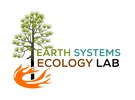|
Humans have extended the fire season and are responsible for 84% of all wildfires that occurred from 1992-2012 by providing unnatural ignition sources. The Albuquerque Journal recently published an article - Hotter, Faster Burns Expected - which stated, this is likely to be a significant fire season in the southwest. While absolutely true, what the article missed is that humans are entirely responsible for the predicament we face this year. While drought and dense forests create conditions that allow large, hot wildfires to burn, there is no wildfire without a source of ignition. Unattended campfires, cigarettes tossed out the window, and downed powerlines are the causes of many wildfires. There are no natural ignition sources until the lightning strikes that accompany monsoon season begin in the southwest. We have the ability to prevent this from being a significant fire season by eliminating human-caused ignitions.
Beyond this year, the wildfire problem is considerably larger than one dry winter. Regular fires burning on the forest floor historically maintained more open conditions and large, hot, fast-moving wildfires were rare. The large, tree-killing wildfires that occur now like the Cerro Grande, Las Conchas, and many others, are completely of our own making. By suppressing fires for a century, we have created dense forests that are loaded with fuel. In addition to the fuel we’ve added to the forest, we’re also cranking up the temperature by continuing to burn fossil fuels. There is a strong link between temperature and area burned by wildfire. As temperature has increased, the length of the fire season in the southwest has increased by 110 days since the 1970s. When snow melts earlier in the season, forests dry out and are more flammable. In the southwest, the area burned by wildfire is 1200% larger than it was in the 1970s. The link between flammability and temperature is how wet the fuels (logs, branches, etc) in the forest are. Higher temperatures dry out forest fuels faster. Since 1984, human-caused warming has accounted for a doubling in the forest area burned in the western US. The drying and increasingly large wildfires are creating treeless landscapes that are dominated by shrubs. With on-going drought, higher temperatures, and larger, tree-killing wildfires large portions of our landscape may not grow forests again. We need to learn to live with fire in the southwest. We need to eliminate the carelessness that provides the ignition source for wildfire. We also need to accept that fire is an important part of our forests and be tolerant when managers use fire to restore our forests. We have to accept that managed fires will sometimes cause smoke where we live. We have to accept that when there is a managed fire, we won’t be able to access the area for recreation for a short period of time. We have to accept that if we live in a flammable environment it is our personal responsibility to make our homes fire safe. If we learn to live with fire, forest managers will have the latitude to restore this important ecological process and help slow how quickly we lose our forests to climate change.
0 Comments
Your comment will be posted after it is approved.
Leave a Reply. |
Details
Archives
October 2023
Categories
All
|

 RSS Feed
RSS Feed